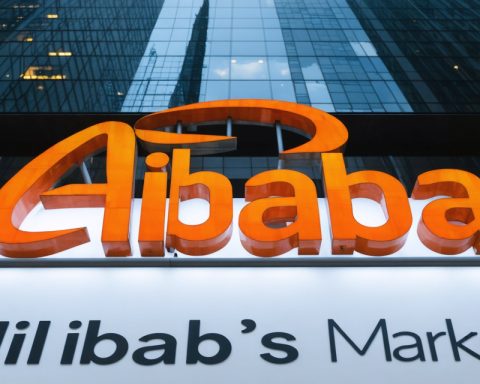- CVS Health Inc. is expected to report Q4 2024 earnings with predicted EPS of $0.94 and revenues of $97.20 billion.
- Morgan Stanley raises concerns about cost pressures, alongside speculation on Medicare Advantage enrollment.
- The healthcare sector faces challenges from rising expenses and missed medical loss ratio targets.
- Despite a strong start to 2025 with a 21% stock surge, CVS still has not recovered from a 45% drop in 2024 stock price.
- CVS shares are currently valued at 9.1 times future earnings, indicating possible untapped value.
- Morgan Stanley maintains a positive outlook on CVS with a target stock price of $63 and an “Overweight” rating.
As CVS Health Inc. prepares to unveil its fourth-quarter 2024 earnings on February 12, the financial world buzzes with anticipation. Analysts foresee earnings per share at $0.94 and a whopping $97.20 billion in sales. Yet, there’s more beneath the surface. Morgan Stanley raises eyebrows about looming cost pressures and questions swirl around the company’s Medicare Advantage enrollment, pegged at 7.3%.
This quarter has been tumultuous in healthcare, marked by higher expenses and missed medical loss ratio targets. The MLR, crucial to understanding the health insurance landscape, reflects the portion of premiums channeled back into patient care. Notably, competitors like UnitedHealth Group have reported increased ratios driven by unique revenue factors, while core costs remain steady. Here, hospital billing and specialty drug prices loom large over the industry.
Despite starting 2025 strong with a 21% stock price surge—dwarfing the modest gains of the S&P 500 and its peers—CVS has yet to recover from a hefty 45% drop in 2024. Currently valued at 9.1 times future earnings, CVS trades below its 10-year average, teasing untapped value for savvy investors.
Morgan Stanley maintains an optimistic stance, projecting stocks at $63 with an “Overweight” rating. They see CVS’s turnaround strategy as a potential catalyst for growth, setting the stage for a market rebound.
With CVS shares standing at $54.25, the crucial question is whether now is the time to seize this potential bargain. In such uncertain markets, the chance to uncover a hidden gem is a serotonin-inducing adventure. Will CVS rise to the occasion? Investors hold their breath, ready for the dazzling reveal.
Is CVS Health on the Verge of a Major Breakthrough?
CVS Health’s Financial Outlook and Market Position
As CVS Health Inc. gears up to announce its fourth-quarter 2024 earnings on February 12, the financial community is abuzz. Analysts anticipate earnings per share at $0.94, with sales projected at a staggering $97.20 billion. However, these numbers only scratch the surface of CVS’s broader narrative, which faces complexities like cost pressures and Medicare Advantage enrollment concerns, benchmarked at 7.3%.
Despite a 21% stock price surge kicking off 2025—surpassing the modest gains of the S&P 500—CVS is still grappling with recovery from a significant 45% decline in 2024. Currently trading at 9.1 times projected future earnings, CVS presents potential untapped value for investors.
Morgan Stanley is optimistic, placing CVS stocks at a target of $63 with an “Overweight” rating. This suggests a possible market rebound, with their turnaround strategy acting as a growth catalyst.
Understanding Medical Loss Ratio (MLR)
The medical loss ratio (MLR) is key to grasping the intricacies of the health insurance world. It indicates what percentage of premiums is used for patient care. The past quarter has been fraught with increased expenses and unmet MLR targets. As an industry trend, competitors like UnitedHealth Group have recorded rising MLRs due to novel revenue factors, despite stable core costs. Factors such as hospital billing and specialty drug pricing significantly affect this landscape.
Is CVS a Buy Now?
Given CVS’s current share price of $54.25 and the valuation below its 10-year average, savvy investors might view this as a golden opportunity. The stock’s undervalued status, combined with the potential for a strategic turnaround, presents a compelling case for potential gains. However, weighing this against market uncertainties is vital.
Pros and Cons of Investing in CVS
Pros:
– Turnaround Strategy: Morgan Stanley’s endorsement of CVS’s recovery strategy boosts confidence.
– Market Rebound Potential: With optimistic projections for stock prices, investors could see worthwhile returns.
– Undervalued Stock: Trading below its historical average may imply room for growth.
Cons:
– Cost Pressures: Increased healthcare costs and specialized drug pricing remain significant challenges.
– Volatility: The previous 45% drop in 2024 highlights inherent stock market risks.
– Uncertain Medicare Advantage Enrollment: Concerns about achieving targeted enrollments could impact future profits.
Predictions and Forecasts for CVS
As the industry grapples with evolving expenses and competition, CVS Health needs to navigate these challenges strategically. If successful, CVS could reclaim its position stronger than before, aligning market valuations with growth initiatives and tapping into the health industry’s potential.
Related Links
– CVS Health
– Morgan Stanley
– UnitedHealth Group
Investors and analysts alike remain poised, eagerly anticipating whether CVS can indeed rise to the occasion and seize the tantalizing opportunities on its horizon.


















